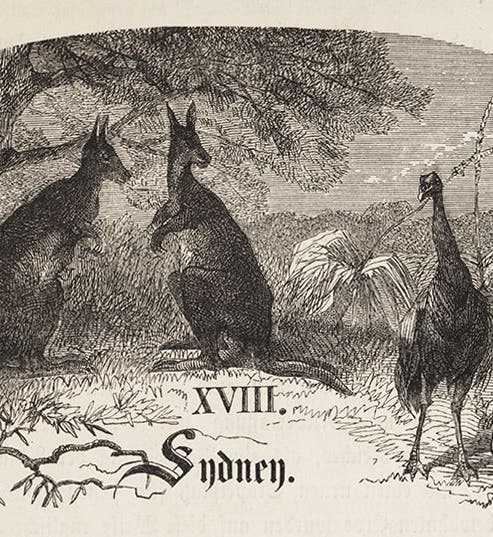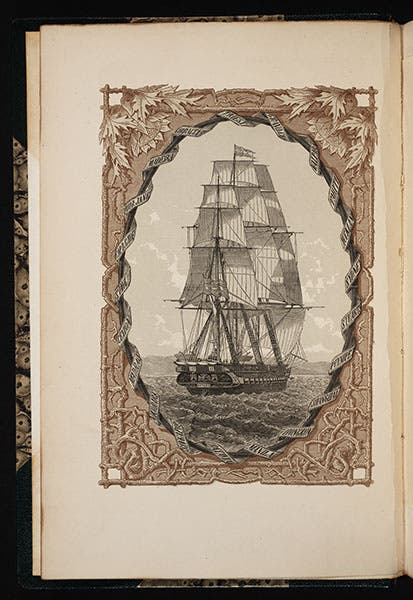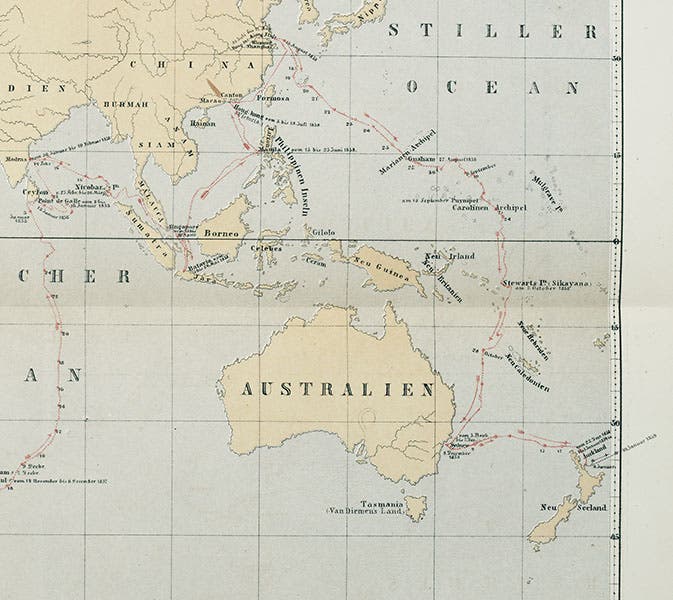Scientist of the Day - Bernhard von Wüllerstorf-Urbair
Bernhard von Wüllerstorf-Urbair, a vice-admiral in the Austrian Imperial Navy, was born Jan. 29, 1816. In 1856, he was chosen to lead the first Austrian circumnavigation of the world. The ship was a frigate, SMS Novara, that was mammoth by Beagle standards, displacing over 2000 tons and carrying a crew of 345. In addition, Wüllerstorf-Urbair selected seven scientists to accompany the crew, for the purpose of studying the regions visited and collecting specimens for the Natural History Museum in Vienna. Wüllerstorf-Urbair was not himself a trained scientist, but his choices for scientists to accompany the expedition were outstanding, and the results surpassed expectations, which is why the Admiral gets to be a Scientist of the Day.
The Novara voyage lasted just over two years, setting out in the spring of 1857 and returning in August, 1859. After the return, Wüllerstorf-Urbair immediately set about writing up the narrative of the voyage, which was published in 1861 as Reise der österreichischen Fregatte Novara um die Erde (The Voyage of the Austrian frigate Novara around the World). His three volumes were followed by 8 larger volumes setting out the scientific results and discoveries of the Novara expedition, including two on the geology of New Zealand by Ferdinand Ritter von Hochstetter, whom we featured in this space almost three years ago.
The images shown here are from Wüllerstorf-Urbair's narrative, which is beautifully printed and bound. Many of the chapters begin with wood-engraved head- and tail-pieces; one shows the animals of Australia (first image), another a Maori at the stern of a war canoe (third image).
The frontispiece (second image) illustrates the Novara herself, with small banderoles listing the many places of call, including Cape Town, Hong Kong, and Sydney. Wüllerstorf-Urbair included a number of scenic views in his volumes, etchings with aquatint skies; we chose one that depicts a cove in Tahiti (fourth image).
Finally, there is a large folding map that traces the path of the Novara around the world; we show a detail that includes the passage to New Zealand and Australia (fifth image).
In 2004, Austria issued a 20 Euro coin that honored the Novara expedition (sixth image). The verso shows the ship, and the front depicts Wüllerstorf-Urbair (on the right) and the commander of the Navy, young Ferdinand Maximillian of the imperial family. In 1864, the Novara would carry Ferdinand to Mexico, where he accepted an invitation to become Emperor of Mexico, an ill-fated venture that ended with his execution in 1867. Wüllerstorf-Urbair escaped being involved in this enterprise and lived until 1883.
The lithographed portrait (seventh image) was printed in 1857, just before the Novara sailed.
Dr. William B. Ashworth, Jr., Consultant for the History of Science, Linda Hall Library and Associate Professor, Department of History, University of Missouri-Kansas City. Comments or corrections are welcome; please direct to ashworthw@umkc.edu.












